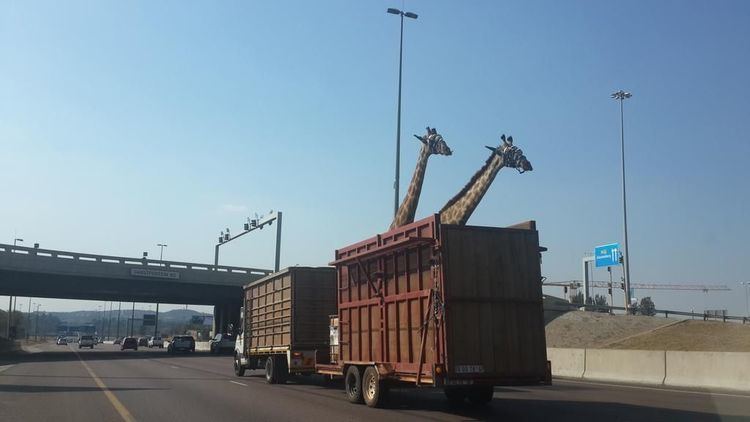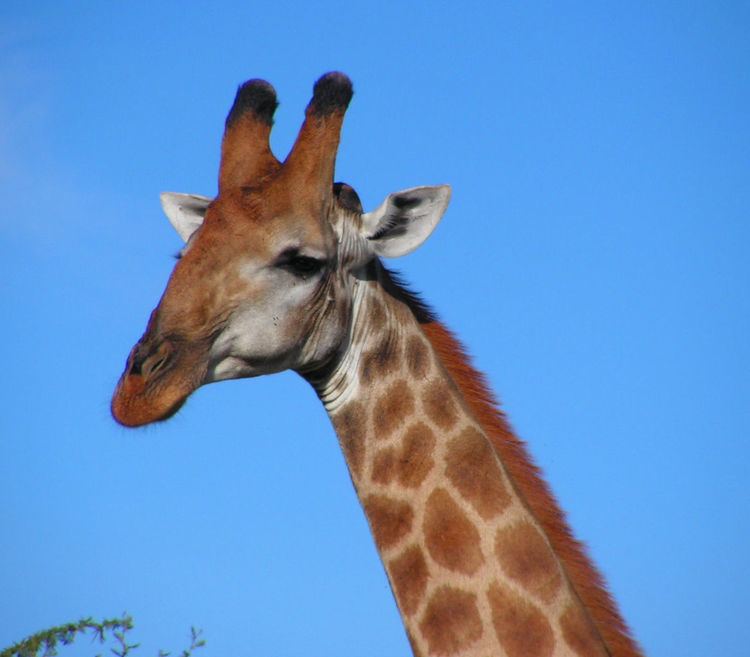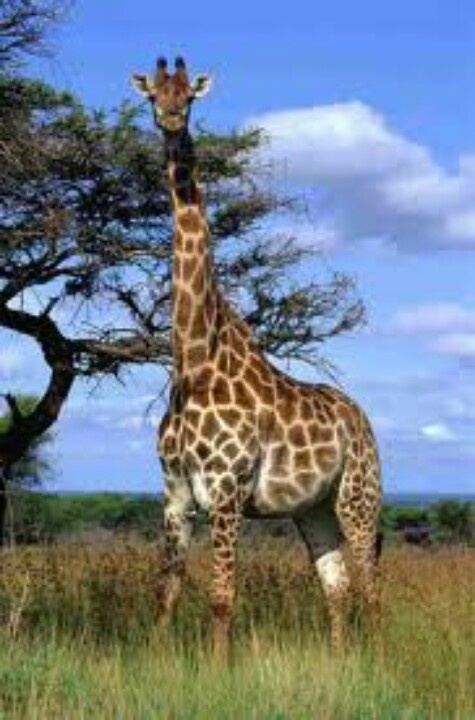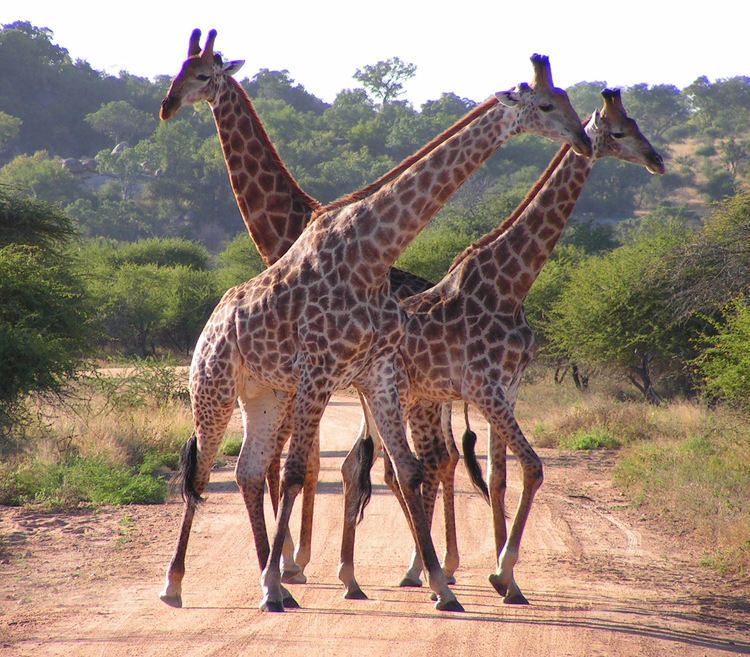Rank Subspecies | Phylum Chordata Order Artiodactyla Genus Giraffa | |
Similar Kordofan giraffe, Angolan giraffe, Rhodesian giraffe, West African giraffe, Masai giraffe | ||
The South African giraffe or Cape giraffe (Giraffa giraffa giraffa) is the nominate subspecies of southern giraffe raging from South Africa, Namibia, Botswana, Zimbabwe, Mozambique. It has rounded or blotched spots, some with star-like extensions on a light tan background, running down to the hooves.
Contents

In 2010, it was estimated that a maximum of 12,000 South African giraffes are living in the wild, and around 45 are being kept in captivity. In 2016, the population was approximated to 31,500 individuals in the wild.

Taxonomy and evolution

The Cape giraffe, along with the whole species, were first known by the binomen Camelopardalis giraffa described by German naturalist Johann Christian Daniel von Schreber in his publication Die Säugethiere in Abbildungen nach der Natur mit Beschreibungen (The Mammals illustrated from Nature with descriptions) during his travel in the Cape of Good Hope in 1784. Although, it is also stated that Dutch naturalist Pieter Boddaert described and given the binomial name Giraffa giraffa whilst also identifying the nominate specimen of said species under the ternary name Giraffa camelopardalis giraffa in 1785.

Once considered a subspecies of the conglomerate Giraffa camelopardalis species, recent studies in 2016 identified the southern giraffe as a separate species of a reorganised Giraffa genus, under the binomial name Giraffa giraffa. Thus, the South African giraffe is the nominate subspecies of the southern giraffe known as Giraffa giraffa giraffa.
Following Schreber's description of the South African giraffe, several specimens were described by other naturalists and zoologists since the end of the 18th century under different scientific names, which are all considered synonyms of Giraffa giraffa giraffa today:

Descriptions
The South African giraffe has dark, somewhat rounded patches "with some fine projections" on a tawny background colour. The spots extend down the legs and get smaller. The median lump of males is less developed.
Distribution and habitat
The South African giraffe is found in northern South Africa, southern Botswana, southern Zimbabwe, and south-western Mozambique. After local extinctions in various places, the South African giraffes have been reintroduced in many parts of Southern Africa, including in Swaziland. They are common in both in and outside of protected areas.
South African giraffes usually live in savannahs and woodlands where food plants are available. Giraffes are herbivorous animals. They feed on leaves, flowers, fruits and shoots of woody plants such as Acacia.
Threats
The International Union for the Conservation of Nature, the body that administers the world’s official endangered species list, announced yesterday that it was moving the giraffe from a species of Least Concern to Vulnerable status in its Red List of Threatened Species report. That means the animal faces extinction in the wild in the medium-term future if nothing is done to minimize the threats to its life or habitat. The next steps are endangered, critically endangered, extinct in the wild and extinct. The giraffes face two main threats, encroachment from cities and towns into their habitat and poaching. Poaching has become increasingly problematic. Some food insecure villagers kill the animals for their meat, but Jani Actman at National Geographic reports many giraffes are slaughtered just for their tails, which are considered a status symbol and have been used as a dowry when asking a bride’s father for his daughters hand in marriage in some cultures. These are problems everywhere for giraffes,” he says. “You need to stop both threats. The biggest problem for giraffes, though, may be the lack of attention over the years. “I am absolutely amazed that no one has a clue,” Julian Fennessy, executive director of Giraffe Conservation Foundation tells Sarah Knapton at The Telegraph. “This silent extinction. Some populations less than 400. That is more endangered than any gorilla, or almost any large mammal in the world.”
In captivity
The South African giraffes are not very common in captivity. As of 2010, there are around 45 giraffes breeding in zoos.
